Urban Land Institute recognizes 10 North American projects as ULI Americas Awards for Excellence winners
By Josh Niland|
Wednesday, Jul 13, 2022

Related
Ten new North American projects were recognized Tuesday by the Urban Land Institute as part of the organization’s ULI Americas Awards for Excellence program, now in its 43rd year.
Among the honorees is Gensler’s EPIC Hollywood development for Netflix and the collaborative Essex Crossing mixed-use design on Delancey Street in Manhattan’s Lower East Side.
The awards recognize new projects in the private, public, and nonprofit sectors that exemplify the ULI’s organizational goals of responsible land use and sustainable community development. This year’s list was selected from a total of 68 entries by the ULI’s 11-member jury panel, which was then further condensed to a group of 21 finalists through a careful process that entailed interviewing each project’s design team. The effort was overseen by HR&A Advisors’ Marilynn Davis, who served as chair. The 10 North American winners will now compete against projects from Asia and Europe for the ULI Global Awards, which will be announced in October.
Scroll down to see the full list of this year’s honorees with a brief description from the ULI about each winner.
EPIC, designed by Gensler, Los Angeles, CA
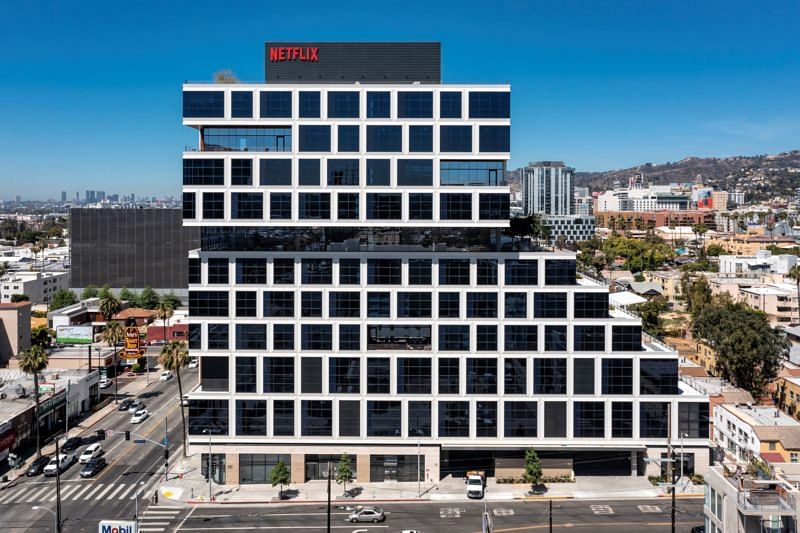
Project description: "The roughly 300,000-square-foot office building features elevated office floors, with each having 15-foot ceiling heights, expansive floor plates, and direct access to the terraces. The terraces are developed as planted, flexible working and amenity spaces that appeal to a creative workforce that sees the office as a landing place for work, live and play in a 24/7 environment. With over 25,000 square feet of elevated outdoor space, this first-of-its-kind project provides more usable outdoor space than any other high-rise building in Los Angeles. The mostly north-facing terraces provide commanding views of the Hollywood Hills and a shaded environment that is both climate and media-screen-friendly."
PopCourts!, designed by Lamar Johnson Collaborative, Chicago, IL

Project description: "Designers transformed an empty city lot on the corner of Chicago and Lockwood into three zones, 'Courts,' each serving a variety of community functions, with the programming meant to be flexible, allowing activities to 'Pop' up and transform over time. The basketball court doubles as a community plaza. The gravel drive hosts food trucks, farmers markets and other seasonal vendors, and the shaded lawn functions as a Food Court with casual seating. Artwork brings the project together, figuratively and literally. Local artists were engaged to paint murals on the adjacent building walls, depicting figures such as Malcom X, Harriet Tubman, and Maya Angelou. The site itself, and spilling out onto the sidewalk and into the street, is painted with a Pop Art theme."
Hopeworks Station North, designed by GGLO and Dykeman Architects, Everett, WA
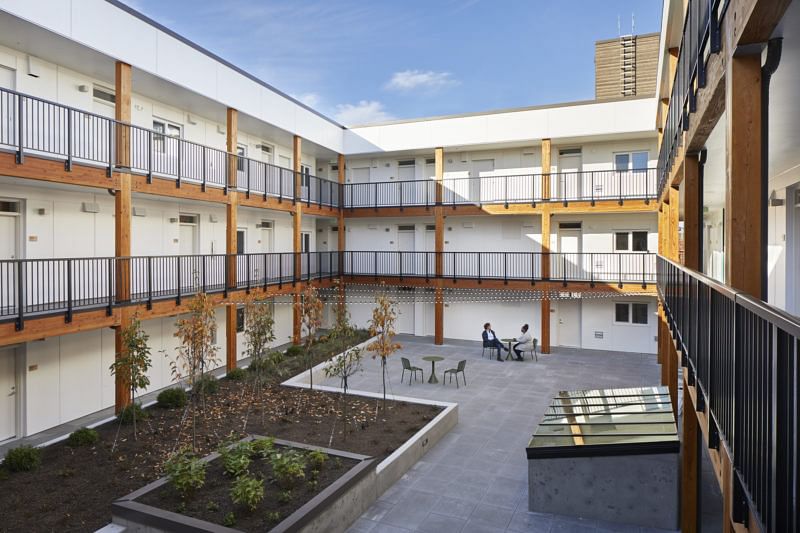
Project description: "Hopeworks Station North provides critical services while promoting sustainability and a connection to the natural environment. The development is part of the International Living Future Institute’s Living Building Challenge Petal Pilot Program for Affordable Housing. The pilot program strives to achieve significant energy reduction, water efficiency, and sustainability goals. Through the provision of a stable home life, Hopeworks Station North creates a healthy, supporting, environmentally friendly space where residents can transform their lives."
Truax Lofts, designed by Nakhshab Development & Design, Inc., San Diego, CA
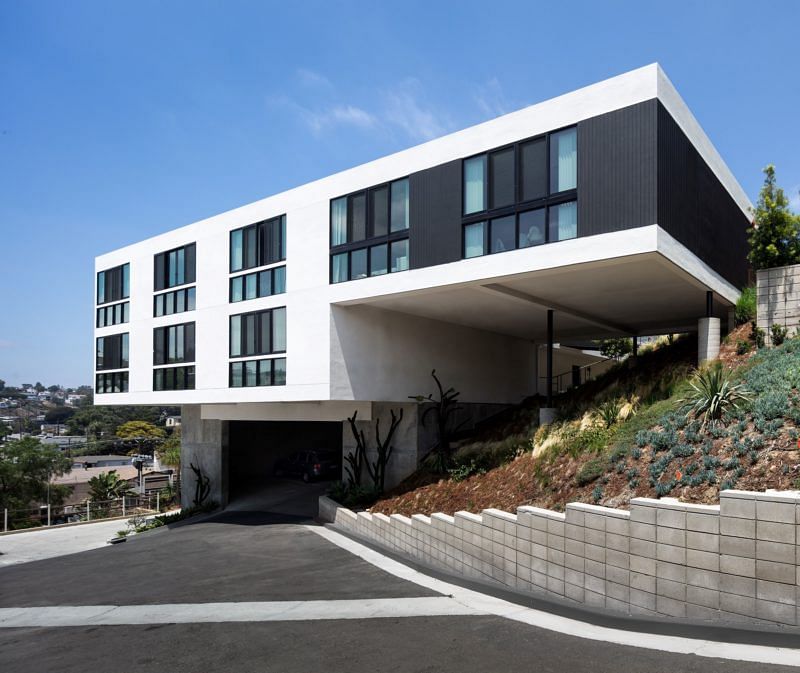
Project description: "The buildings share an open-air courtyard space, inviting residents to spend the evening barbecuing, enjoying the firepit, or taking in a movie on the retractable outdoor screen. The landscape features a variety of drought-tolerant, minimal-maintenance flora to further promote the eco-friendly nature of the property. The properties were completed using sustainable materials and finishes and boast solar panels to offset electric power usage, resulting in exclusive LEED certification. The entire project is a testament to the blend of vintage and modern architecture for which Bankers Hill is known."
Taylor Street Apartments and Little Italy Branch Library, designed by Skidmore, Owings & Merrill (SOM) and Nia Architects, Chicago, IL
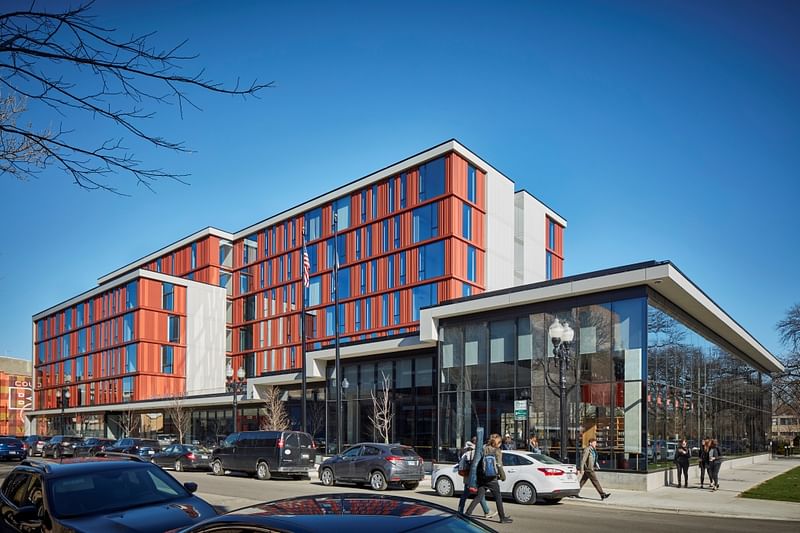
Project description: "Built on a former brownfield and intended to revitalize the Little Italy neighborhood, the project provides 73 housing units—37 Chicago Housing Authority units, 29 affordable, and 7 market rate—and through creative public and private financing, replaces an obsolete, smaller branch library with a new, inviting and well-appointed facility. As a result, the project has become a destination for this diverse and expanding community, and a true catalyst for change."
Essex Crossing, designed by Beyer Blinder Belle; CetraRuddy; Dattner Architects; DXA Studio; Future Green Studio; Handel Architects; Kokobo Greenscapes; SHoP Architects; SLCE Architects; Studios Architecture; West 8, New York, NY
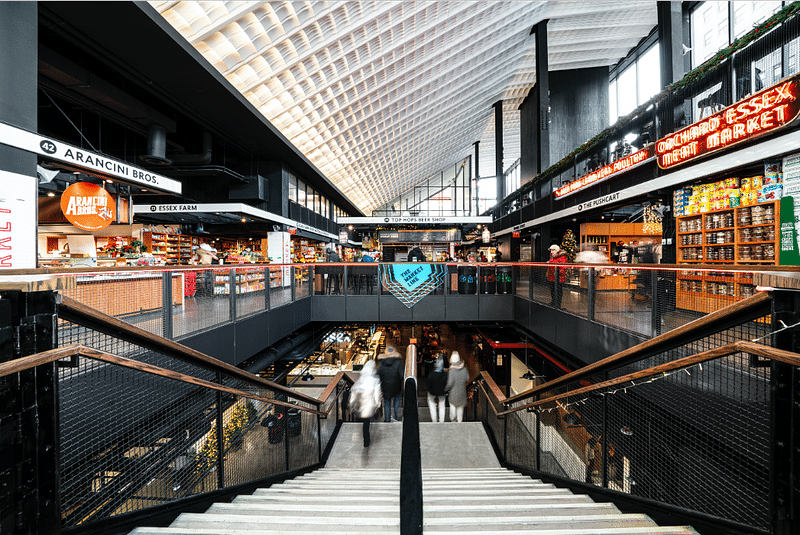
Project description: "Called 'one of New York’s most promising mixed-use developments' by The New York Times, Essex Crossing comprises 1.9 million square feet of residential, commercial, and community space in the heart of the Lower East Side. The $2 billion project, which is over 90 percent complete, includes 1,079 units of housing, 350,000 square feet of Class A office space, 100,000 square feet of community facility space, and 300,000 square feet of retail space, including The Market Line, which will be the City’s largest marketplace upon completion. Essex Crossing’s nine sites on six acres had sat mostly vacant since 1967 and represent one of the most significant urban renewal developments in New York City’s history. In an effort to reunite the community and address a citywide need for affordable housing, Delancey Street Associates worked with local residents and stakeholders to reimagine the under-used space as a mixed-use community, Essex Crossing.
Homekey LifeMoves, designed by Charles Bloszies Architecture & Structures; BKF Civil Engineers; ARUP (MEPF); West Environmental Engineering, Mountain View, CA

Project description: "Architect Charles Bloszies incorporated architectural features that cater to the supportive services program model and promote privacy, dignity, and security. Design features such as individual housing units with ensuite bathrooms and private meeting spaces were incorporated based on the feedback of those with lived experience. These design features also incorporate confidential spaces for personal care and for private conversations with case managers, employment and housing specialists, and behavioral health care providers. There are also custom-designed nursing stations with secure places to store medications and host confidential medical consultations."
Indigenous Peoples Experience at Fort Edmonton Park, designed by nFusion, A Nassal Company; Stantec Architecture; John King Creative, Edmonton, AB
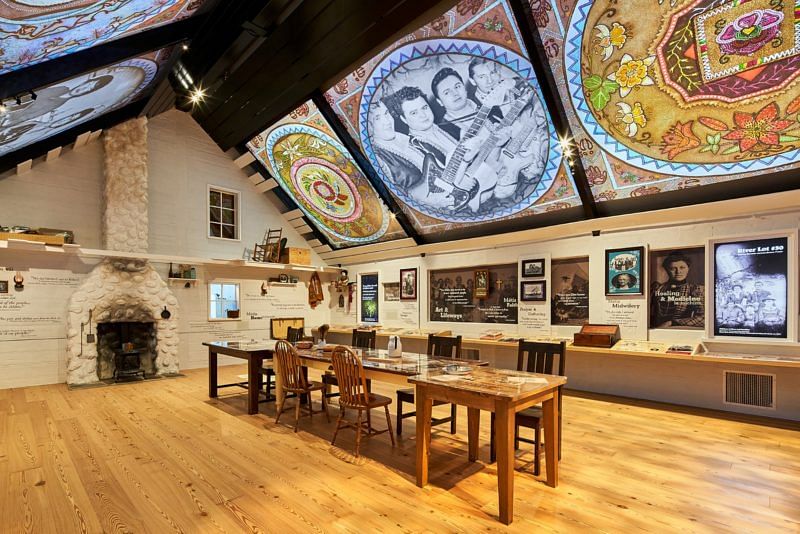
Project description: "Fort Edmonton Park is located along the North Saskatchewan River valley in Edmonton, Alberta, Canada and provides guests the opportunity to experience life in four historical periods between 1846 and 1929. The Indigenous Peoples Experience expands beyond these four periods by integrating pre-contact and post-contact stories of Indigenous Peoples with respect and accuracy in a living museum. The exhibit explores the rich cultures of local First Nations and Métis Peoples while encouraging guests to seek out truths lived by Indigenous Peoples before and after Canada’s founding. This opportunity to uplift Indigenous communities comes at a critical time in Canada’s reconciliation with Indigenous people. The Experience features a new 32,000sqft facility containing a walkthrough experience, classrooms, and event space, within a 7-acre site that includes lush native plant discovery trails, animal sculptures, tipi camps, gathering places, arbors, and open-ended opportunities for interpretive programming and events."
Meyer Memorial Trust Headquarters, designed by LEVER Architecture, Portland, OR

Project description: "The project blends sustainability measures with equitable thinking at every level of the development process. Examples include a bottom-up approach to design and decision-making with participation from Meyer staff at every stage; going above and beyond ADA requirements; furniture that accommodates different bodies and abilities; diversity of cultures and languages reflected in signage and artwork; materials selection criteria that supports BIPOC and rural communities in Oregon; and high levels of BIPOC- and women-owned business participation (39% for the design team and 47% for the construction team). Meyer’s new campus is Oregon’s first LEED v4 Platinum building and is in the top 1% nationally for energy performance amongst similar building types, with an anticipated 66% energy cost savings compared to code standards."
St. Pete Pier, designed by Rogers Partners + Urban Designers; ASD | SKY; Ken Smith Workshop; W Architecture and Landscape Architecture; Wannemacher Jensen Architects, St. Petersburg, FL
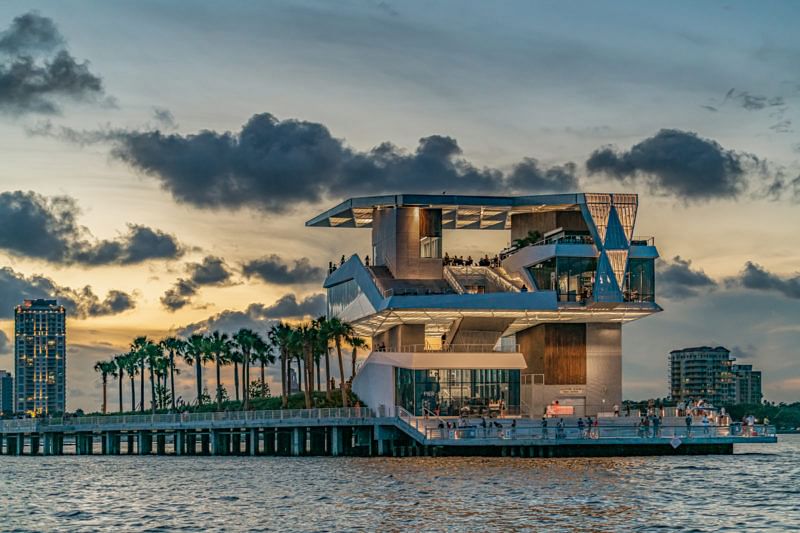
Project description: "The goals of the project were developed with an enormous amount of public input. A community group identified 10 Key Elements, including fishing, observation, dining, shopping, playground, marine education, passive recreation and event space. All design decisions were made with these key elements in mind. The Pier consists of a beach, playground, splash pad, 5 dining concepts, an environmental education center, a market, event spaces, waterfront promenade, public art and acres of green space. Additionally, the Pier has over 80 events per year and many outdoor classes, such as yoga and spin. Despite opening during a national pandemic which continues to this day, the Pier has far exceeded any attendance projections, with over 2.5 million visitors annually."

RELATED NEWS UT Austin team wins the 2022 ULI Gerald Hines Student Competition with an urban development plan for Oakland

RELATED NEWS Urban Land Institute awards 13 Developments in North America, Europe and Asia


Share
0 Comments
Comment as :